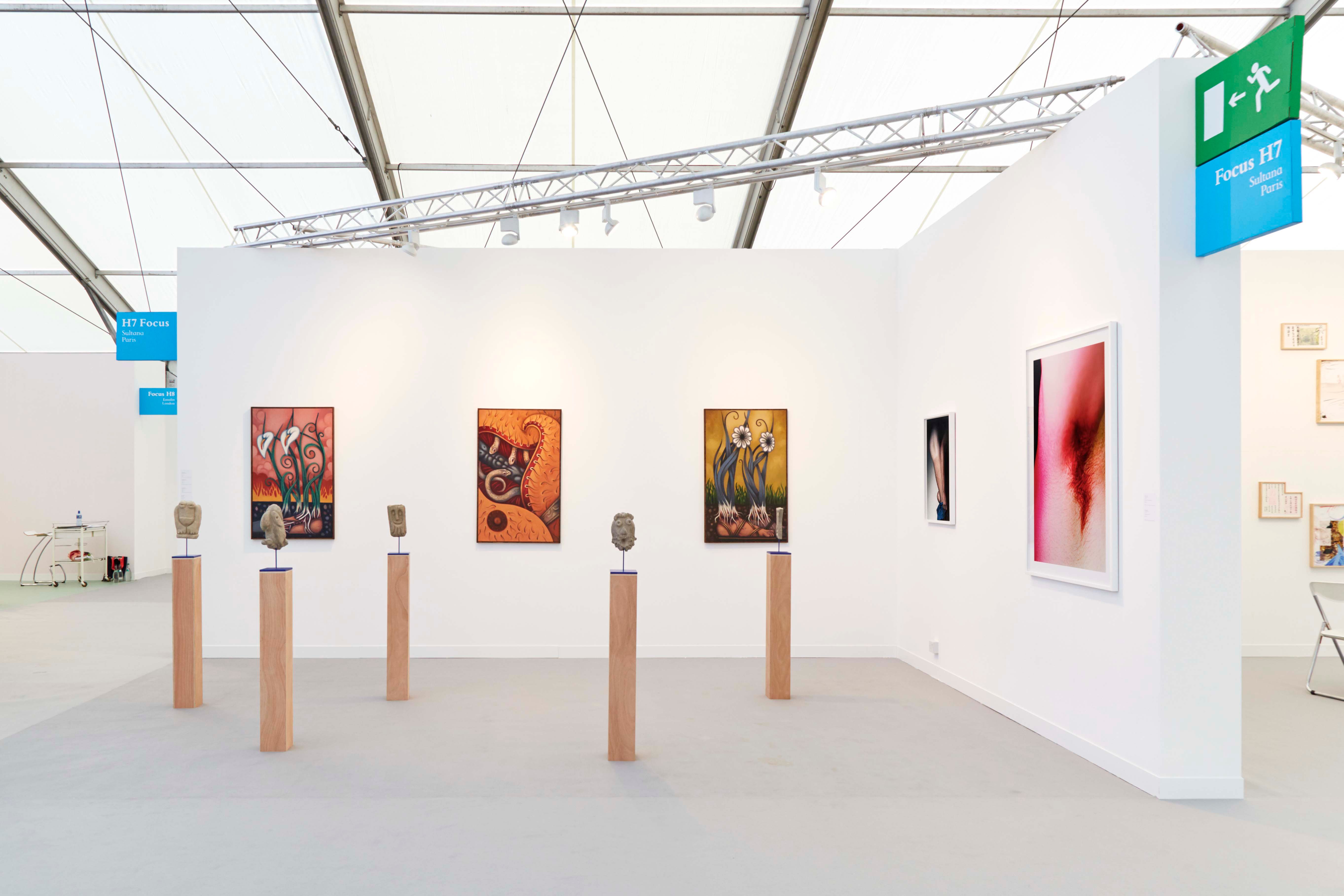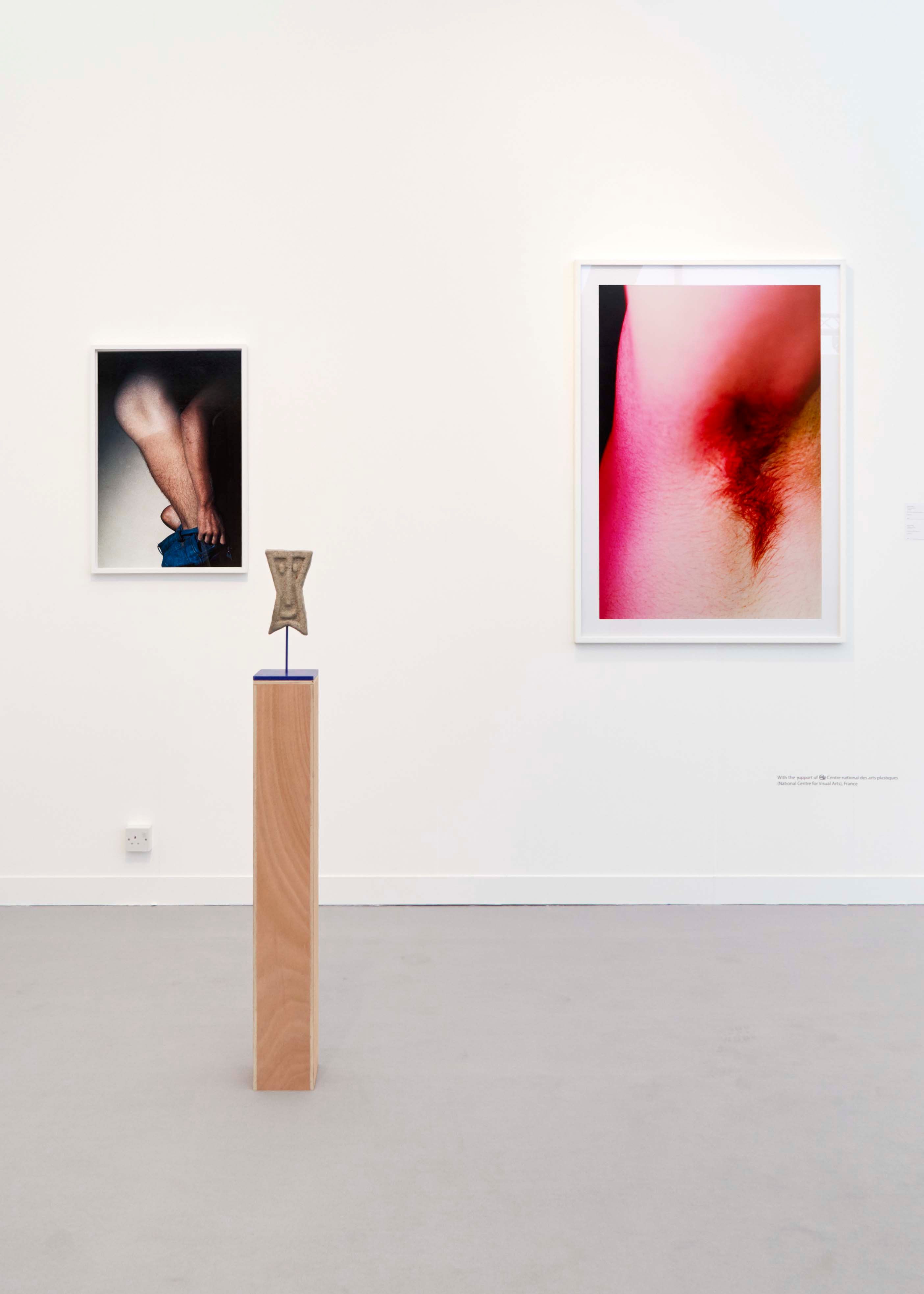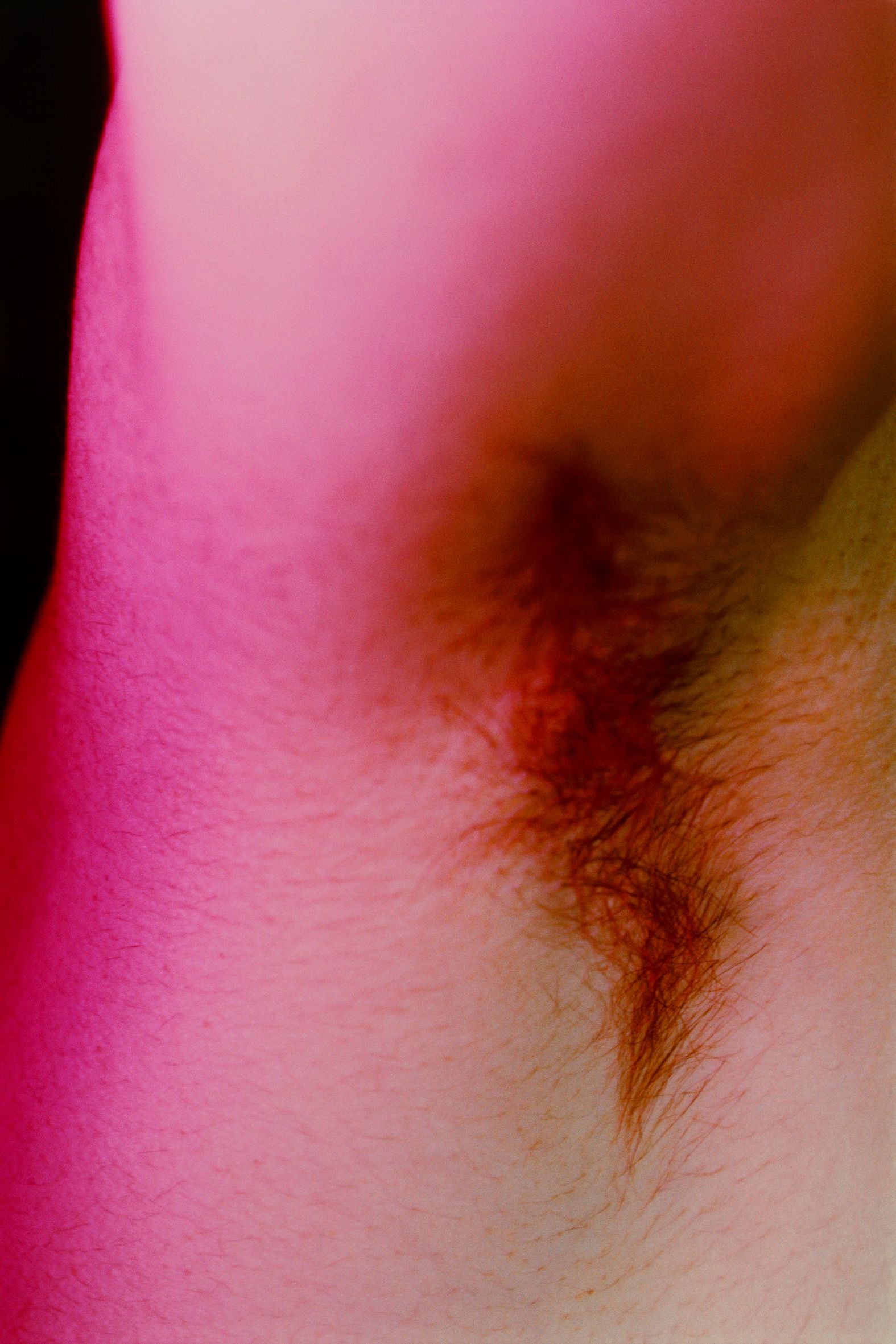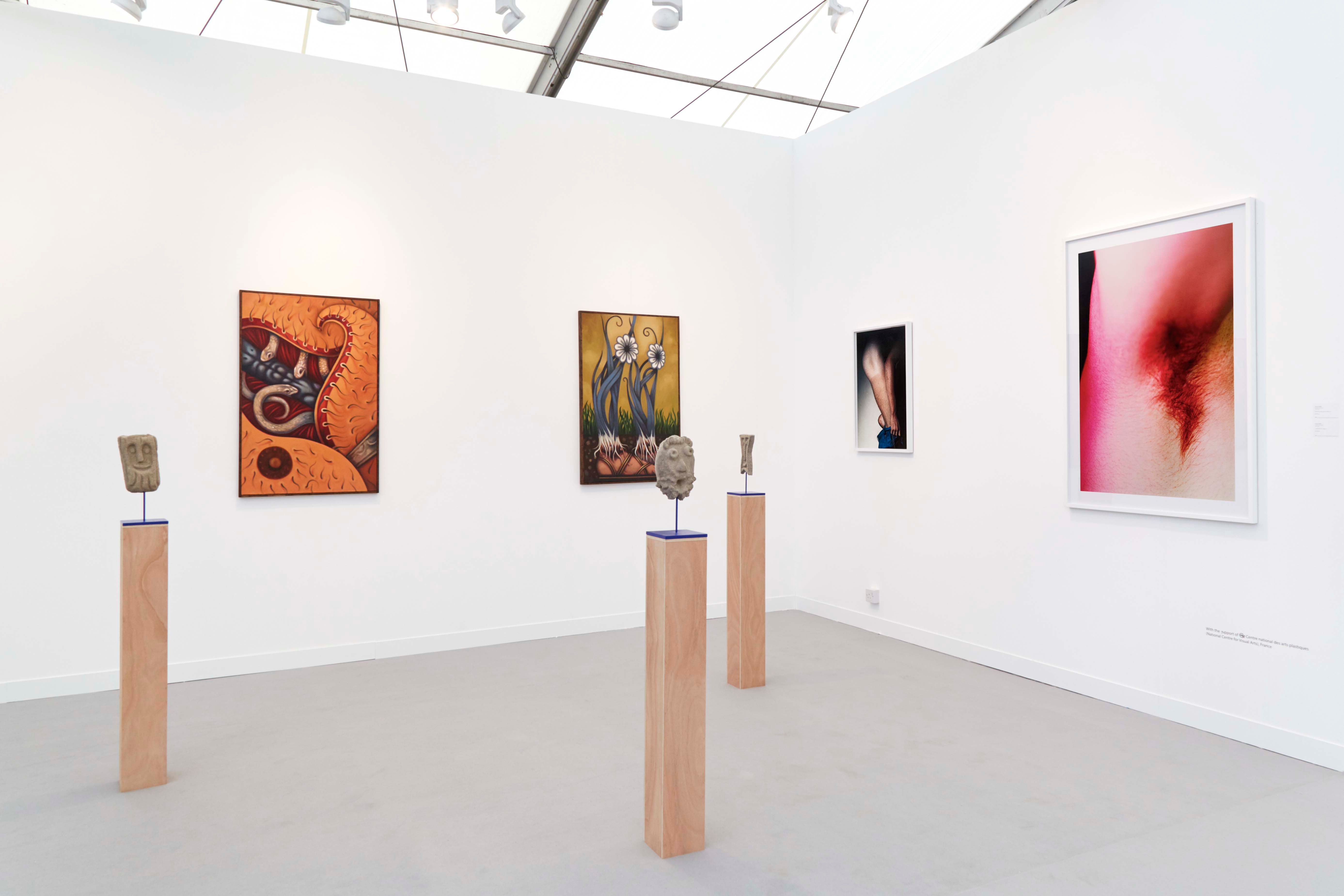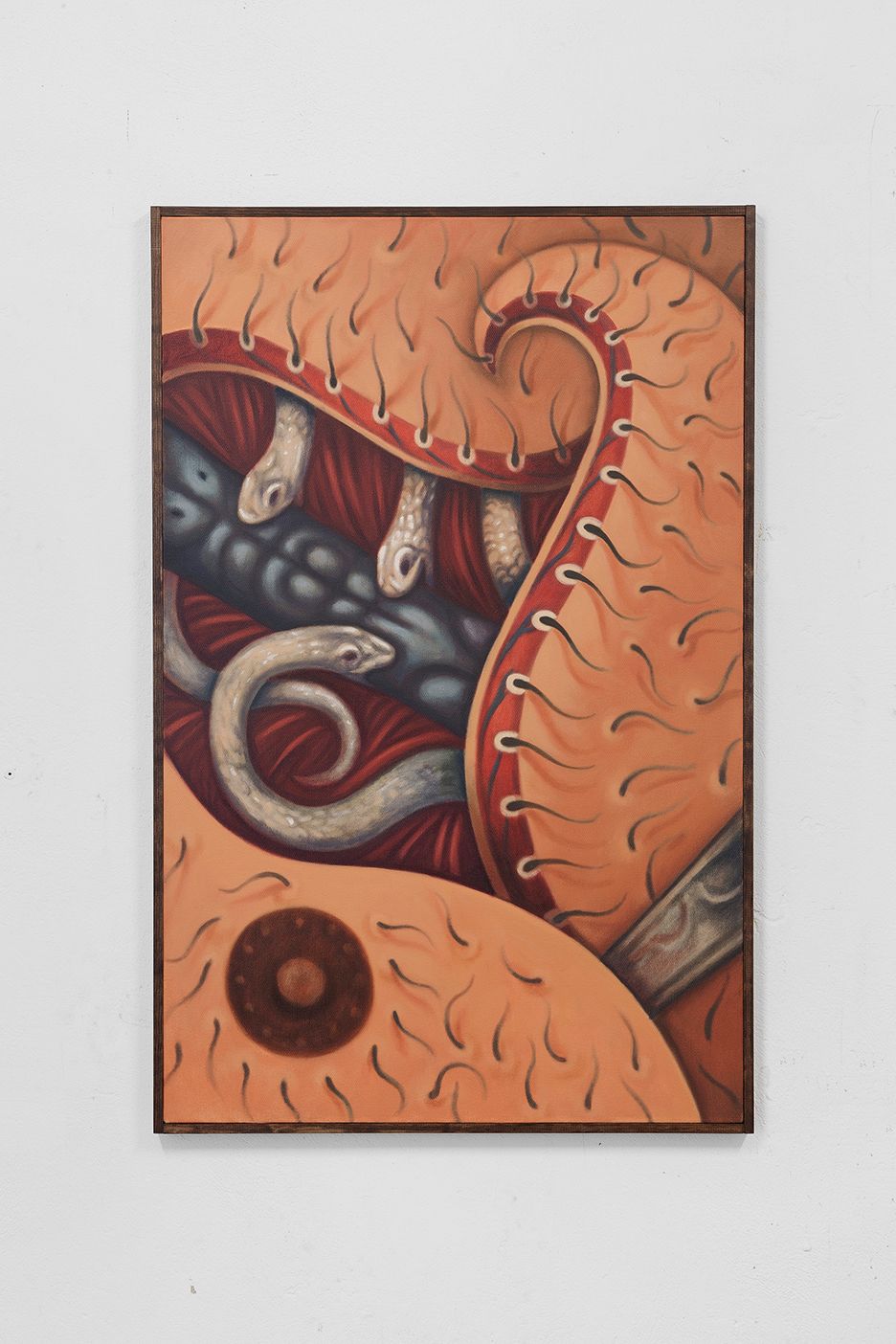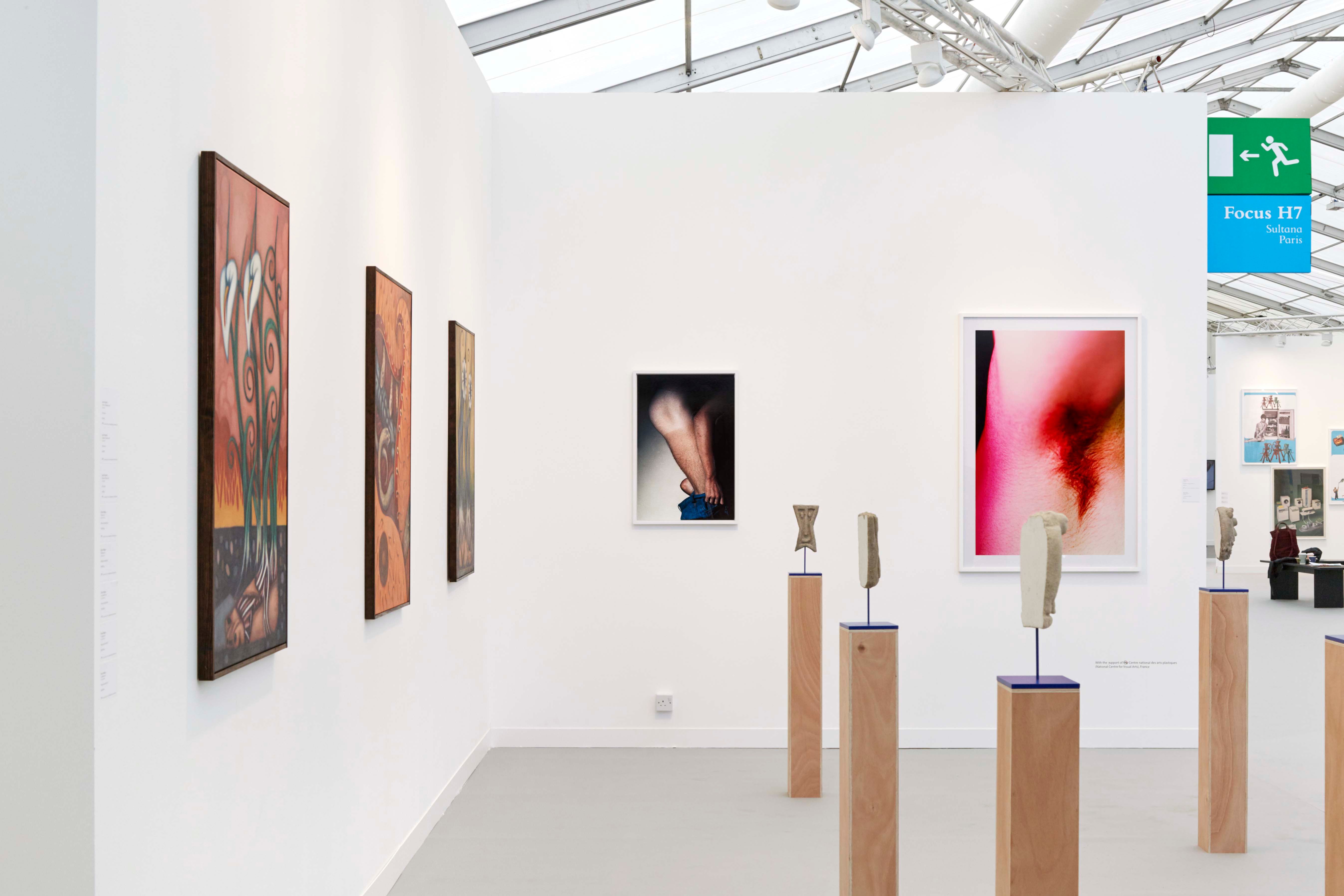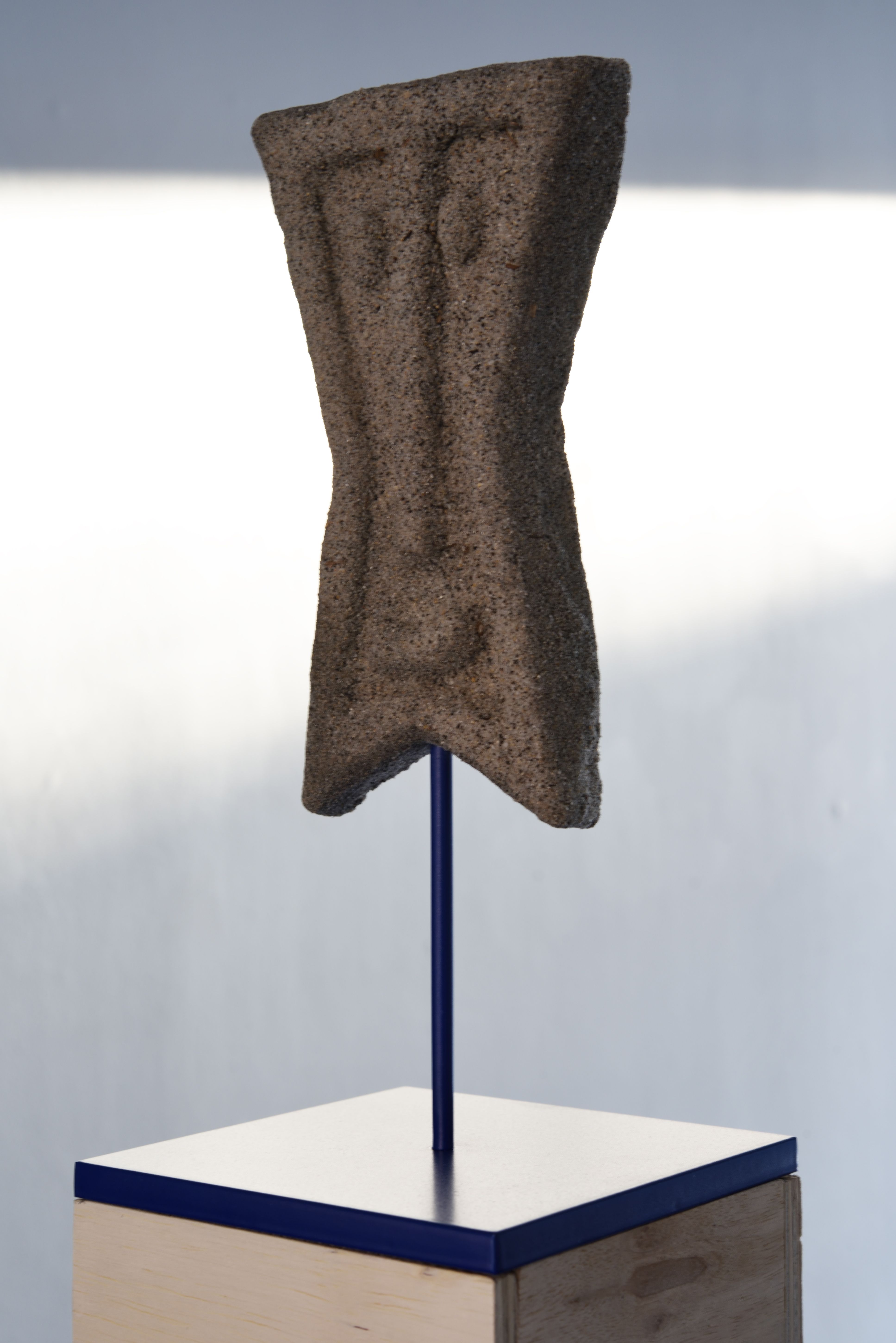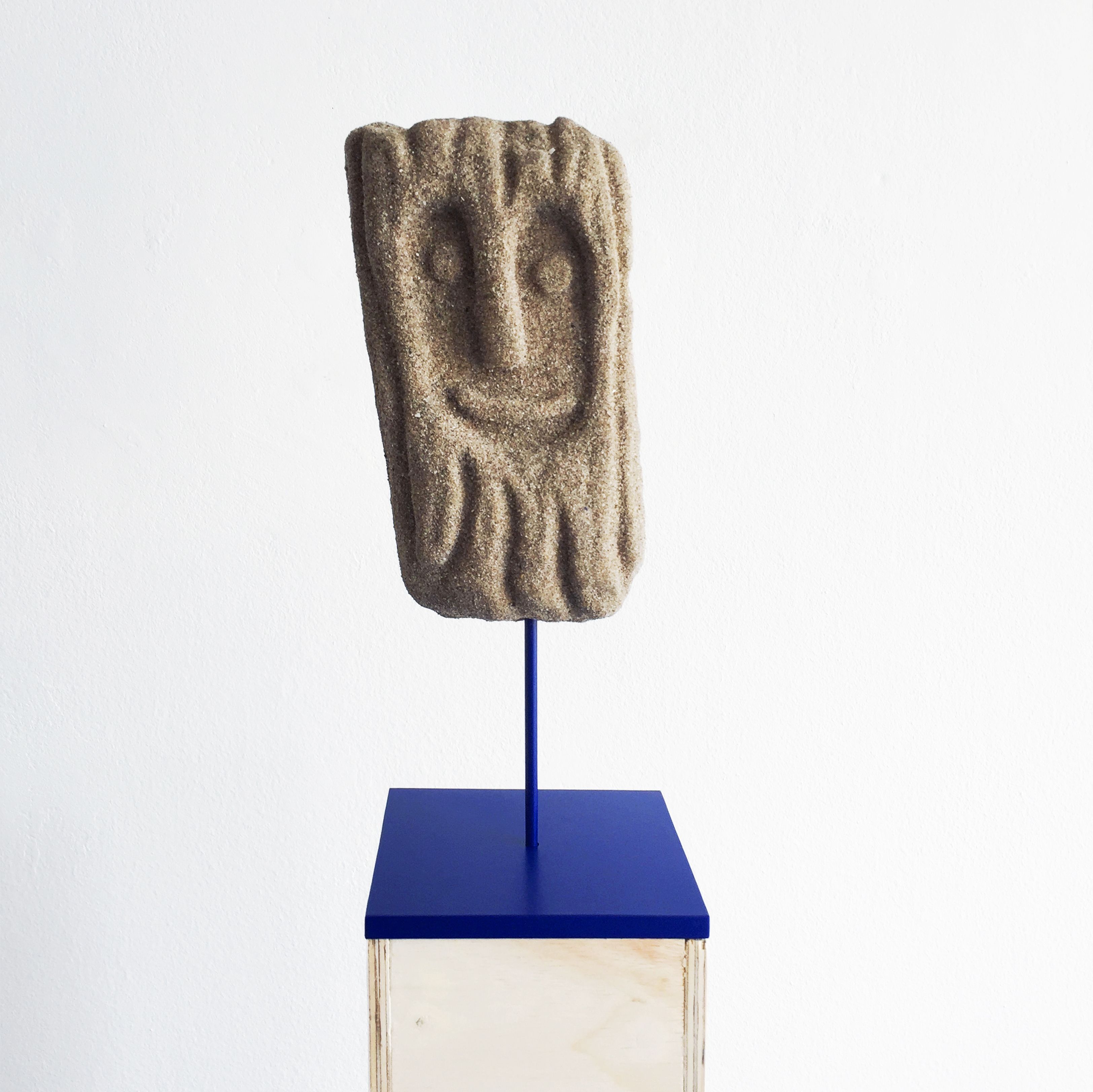The project features three artists from different cultures and generations. On a wall, paintings by Fitztpatrick, then in the centre some Millagou's sculptures and Pfeiffer buries a whole wall with wallpaper and photographs hung on it.
Fitzpatrick works into the body as metaphor for social structures, and sexuality in relation to productivity and repression. He is interested in the psychological abstraction of the body that western religion imposed on it through the moralising of sexuality in favour of procreative sex, at the dismissal of any sexuality that fell outside of heterosexual marriage and childbirth.
Surrounded by the immemorial aura of archaic beliefs, Millagou’ surfboards are inspired by the Tiki, which are traditional carved human representations from Oceanian culture with a contemporary and sexual look. Millagou’s practice is located at this point of dilution: from apparently incompatible mythologies, it recomposes a syncretic totality where everything conspires to the recovered utopia.
Pfeiffer's pictures are the extension, concretized by the image, of a certain way of looking, of acting, of moving. This interpretation is confirmed by the way in which Pfeiffer's works are presented, the presentation bears witness to a certain humor that is not gratuitous but reflects, on the contrary, an optics that oscillates between diffuse sensuality and irony.
The three artists explore notions of body representation and masculinity. They also evoke different types of underground culture, gay iconography, rituals, religions, primitivism, identity and social marginality in the works on display.

